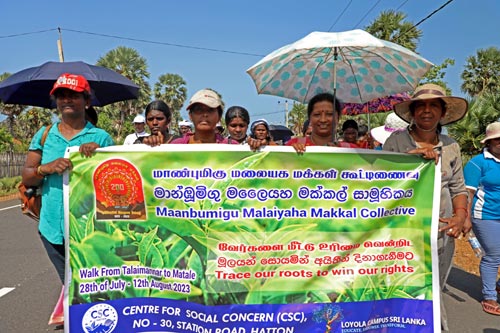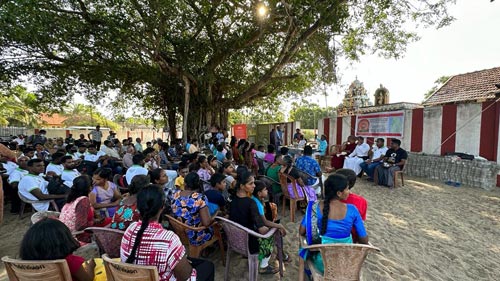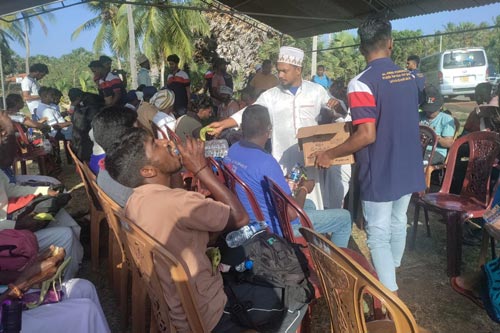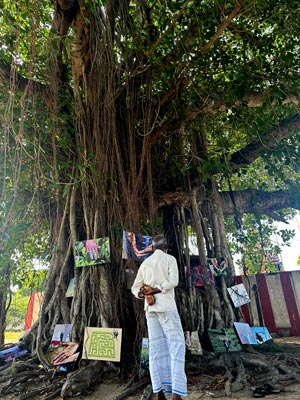Retracing their steps 200 years after
 Commemorating 200 years since their arrival to Ceylon, the plantation community – the Malaiyaha community – is retracing the journey of the first groups of women and men brought to Ceylon/Sri Lanka to work in the plantations in the hill country.
Commemorating 200 years since their arrival to Ceylon, the plantation community – the Malaiyaha community – is retracing the journey of the first groups of women and men brought to Ceylon/Sri Lanka to work in the plantations in the hill country.
From July 28 to August 12, the Maanbumigu Malaiyaha Makkal walk which began in Thalaimannar and is now in progress has different communities along the way joining to show solidarity on the pilgrimage and connect with the first generation who made this arduous trek, 200 years ago.
From August 7, the walk continues from Mihintale, Tirappane, Kekirawa, Dambulla, Nalanda and will culminate on Saturday, August 12 in Matale.
Over the years, thousands of workers who were shipped to Sri Lanka from India to work, landed in Mannar, and were made to embark on a dangerous trek on foot to Matale. They endured life threatening disease, cleared jungles and braved wild animals while walking the distance. In some groups, as many as 40% died along the way, and were buried or disposed of.

Stops along the way: The marchers have some much needed breaks. Pix courtesy Maanbumigu Malayaham
Through this effort, the walk organisers hope to highlight the current status of the Malaiyaha Tamil community, including over 500,000 living in plantations as residents. The ‘Malaiyaha Ezhuchchi Payanam’ is also about the future; the demand of the Malaiyaha Tamil community to be recognized as equal citizens of Sri Lanka.
The most affected segment has been those living and working in the plantation estates who register lower measures on almost all human development indices, compared to every other community in the country, they note.
Among the issues they wish to highlight are that a large proportion of the plantation community still live in line room houses, with poor water and sanitation facilities. Most health and nutrition indicators, including infant mortality, birth weight and stunting, show a generational lag compared to national averages.
Educational attainment rates, including the population with O/L and University education, are significantly lower in comparison to other communities, as is their participation in public sector employment and tertiary education.
Access to land, administrative services and welfare programmes also remain grossly unequal. Many do not have an address. Poverty rates among the community are significantly above the national average, they point out.


Searching for an ideal partner? Find your soul mate on Hitad.lk, Sri Lanka's favourite marriage proposals page. With Hitad.lk matrimonial advertisements you have access to thousands of ads from potential suitors who are looking for someone just like you.


